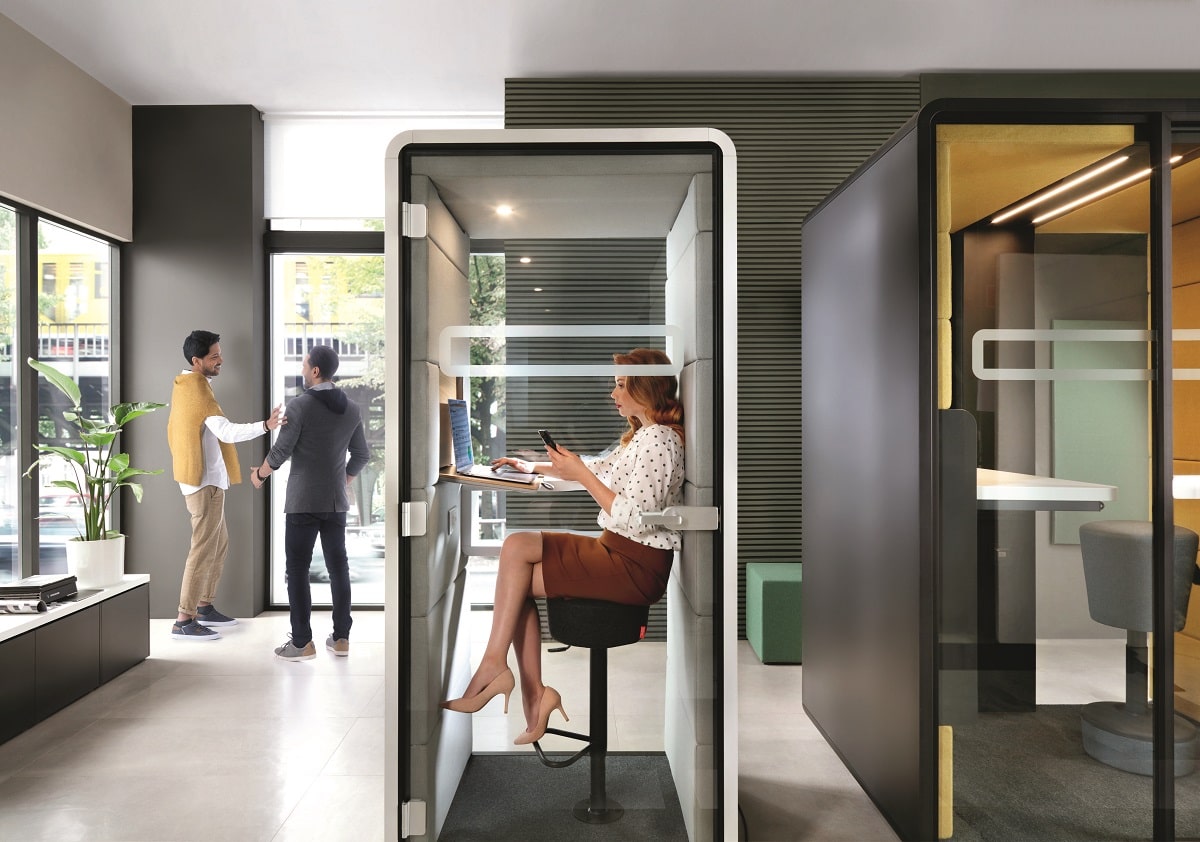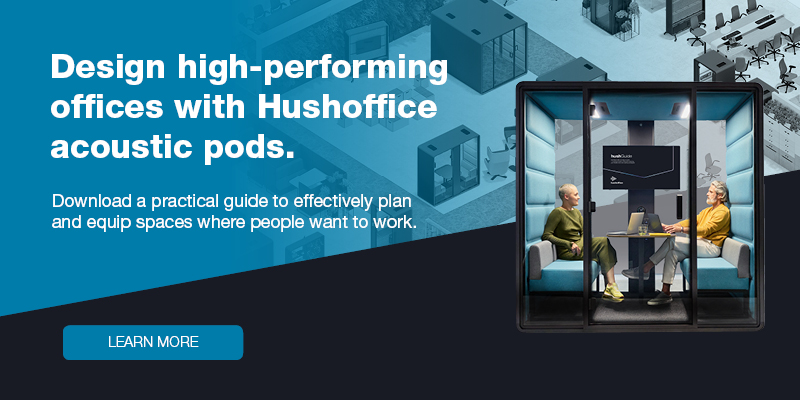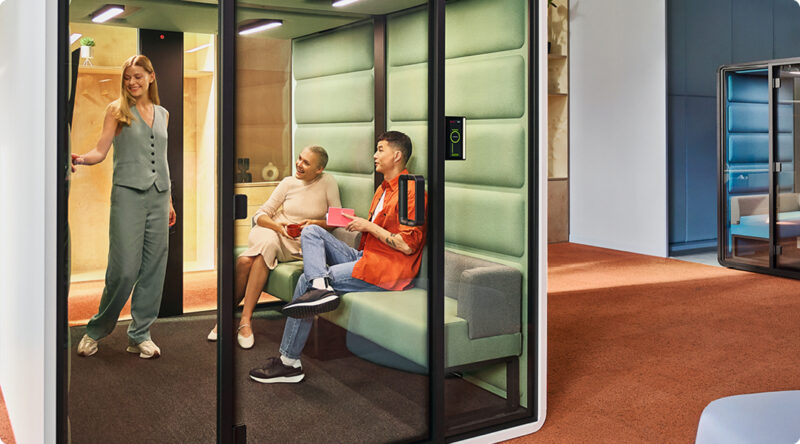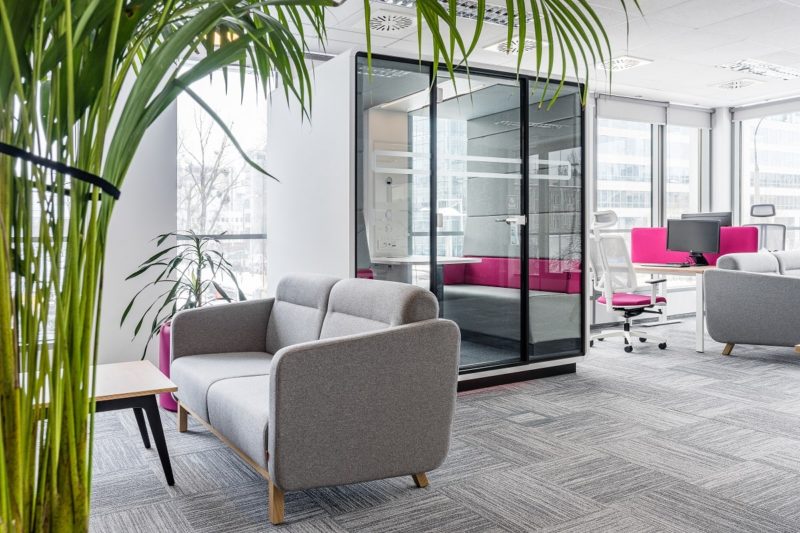Noise: the silent productivity killer in the workplace
- Posted on: 16 May 2023
- By: Hushoffice Team
What role does office noise play in workplace stress? How does stress impact an employee’s productivity over the long run? What easy, affordable remedies can organizations implement today to make their office quieter? This short blog tells all.
Office noise – tl;dr
While stress can boost productivity in the short term, it decreases it over the long haul. This is because chronic stress leads to fatigue and demotivation and impairs cognitive function, ultimately impeding one’s performance.
The pandemic significantly increased workplace stress; 61% of people felt burned out at work in 2020, up from 43% in just a year. By 2021, roughly 39% of employees were outright exhausted.
There’s a silver lining to the stress epidemic: office noise is a main contributor, and because it’s concrete and common, there are numerous inexpensive, straightforward remedies for improvements.
Uncomplicated ways to control office noise include the addition of acoustic panels or wall-mounted baffles, the use of white noise machines or headphones, the installment of door sweeps, and rearrangement of the office layout.
Hushoffice pods are a strong solution to the office noise problem because they’re masterfully engineered to block out open floor noise for the user while containing noise made inside for peers on the floor. As a result, employees within enjoy a quieter private workspace while employees on the floor enjoy a quieter floor.
Invariably, stress ultimately hinders employee performance.
While stress can increase productivity in the short term, it decreases it over the long haul. This is called the “productivity paradox,” and it plays out because chronic stress leads to exhaustion, lowered motivation, and reduced cognitive function, all of which hamper one’s capacity to work.
Well-being, job satisfaction, and performance are closely related.
The highly influential 2000 study “Psychological well-being and job satisfaction as predictors of job performance.” observed the ties between well-being, job satisfaction, and performance. It found that well-being and job satisfaction strongly predict performance, and stress negatively affects both.
Today, the link between stress and professional happiness is widely understood.
Yet still, many employees are struggling. And the pandemic significantly increased workplace stress. 61% of people felt burned out at work in 2020, up from 43% in just a year. By 2021, roughly 41% of employees felt overworked, while 39% were outright exhausted.
There’s a bright side to the stress epidemic: a commonplace cause. Noise.
A significant and solvable contributor of workplace stress is right beneath many employers’ noses. Or right by their ears, so to speak. Office noise. It’s one of the leading causes of workplace stress. And because it’s both tangible and widespread, it can be simple to remedy, with numerous quick solutions and adjustments available
– says Mateusz Barczyk, Senior Brand Manager, Hushoffice.
Office noise impacts employees in many ways. Rather than focusing on its negative effects, try to view it as an opportunity to improve the workplace. For example: since noise causes tension, reduction of it can lead to new peacefulness that supports steadier performance.
Occupational noise exposure is associated with an increased risk of several mental health problems, including anxiety, depression, and burnout. Therefore, quieter office spaces promote calmness, contentment, and enthusiasm.
Office noise (including speech and environmental noise) has a negative impact on the performance of office-related tasks, including reading comprehension and proofreading. Thus, in curtailing background office noise, you can boost task competence.
Noise pollution is shown to have various health effects, cardiovascular disease and sleep disturbances included. So by enhancing the office’s soundscape, you promote the physical health of your employees and can potentially improve their sleep.

Because office noise is such a stress point, lessening it makes a big difference. For instance, noise interferes with cognition — so by minimizing it, you ensure that employees can focus more easily, work more efficiently, and feel more in control of their workload. Sustained exposure to high levels of noise can also increase heart rate, blood pressure, and respiratory rate, too. So by making the workplace quieter, you address these physical symptoms and promote calm. The benefits are interrelated and go on and on
– adds Mateusz Barczyk, Senior Brand Manager, Hushoffice.
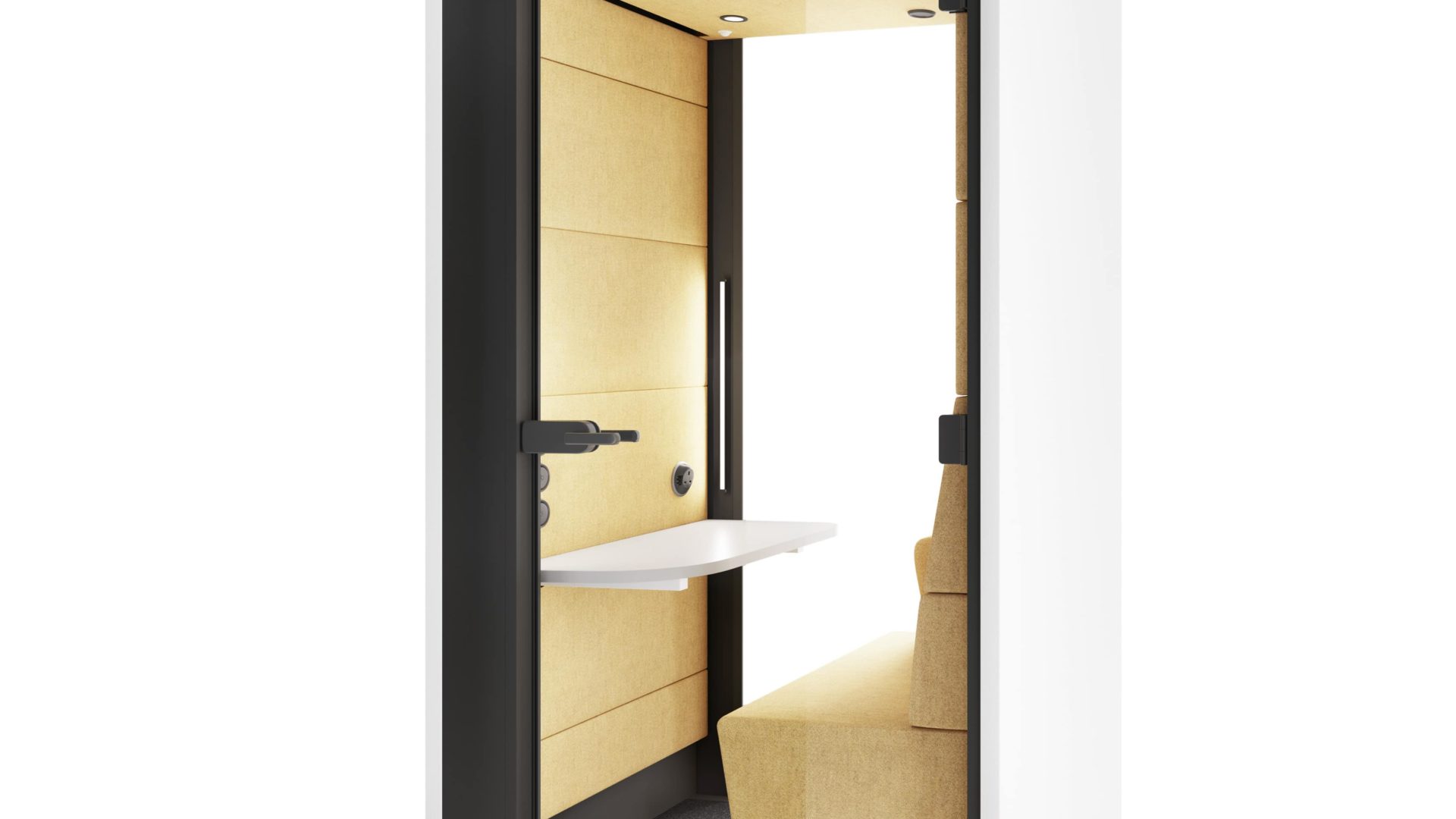
9 affordable, uncomplicated ways to minimize office noise immediately…
Add acoustic panels or wall-mounted baffles. Acoustic panels are low-cost and easy to install. They can help to reduce noise levels by absorbing sound waves. Wall-mounted baffles can also be effective, particularly if you have high ceilings, as they help to diffuse sound and prevent echoes.
Use white noise machines. White noise machines generate a consistent, low-level sound that masks distracting noises. They are relatively inexpensive and can be easily placed in the noisiest parts of an office.
Encourage the use of headphones. If you have employees who need to concentrate on complex tasks, encourage them to use noise-canceling headphones or earbuds. This will help to block out ambient noise and allow a stronger focus on work.
Rearrange the office layout. Consider moving around workstations and implementing sound-insulating space dividers like SONIQ. This can help to decrease ambient noise by containing it in isolated zones.
Install door sweeps. Door sweeps are affordable and easy to install and help to prevent sound from leaking through the gaps under doors. They can be a big help if you have offices or conference rooms with doors that don’t close tightly.
Use plants to absorb sound. Plants are a natural way to soak up sound waves and can be used to improve an office environment’s soundscape. Consider placing them strategically around the office.
Encourage quiet behavior. Establishing an office culture that values quiet behavior can tone down the noise. Encourage employees to keep their voices down and avoid unnecessary conversations in common areas. Consider designating certain hours of the day as “quiet hours” and certain spaces of the office as “quiet zones.”
Use carpet or rugs. Hard surfaces like tile, concrete, or hardwood floors reflect sound waves, contributing to the noise problem. Adding soft, sound-absorbing carpets and rugs to common areas or high-traffic areas can help create a more peaceful environment.
Hold meetings in a sound-insulating space like a hushMeet pod. Meetings are a major source of noise in open office spaces. Try scheduling them in a professional meeting space like hushMeet.

Want a silver bullet solution? Consider Hushoffice pods — a sound investment in every sense.
Hushoffice pods and booths trap noise at the source. So they improve the office’s soundscape for everyone (by isolating phone calls, meeting discussion, etc.). They simultaneously give pod users the convenience of perfect work and meeting spaces.
Pods sound-insulate the top two sources of office noise: conversations and phone calls.
From the Hushoffice collection, we offer our hushMeet acoustic booth for meetings of four people and our hushPhone 1-person call booth for private calls to reduce these two sources of noise.
By supplying employees with spaces like pods for the most important and incidentally noisiest office tasks, you do more than give said employees effective spaces for the tasks that matter most. You also contain the top causes of office noise, making the open floor quieter, more pleasant, and more productive for everyone on it
– explains Mateusz Barczyk, Senior Brand Manager, Hushoffice.
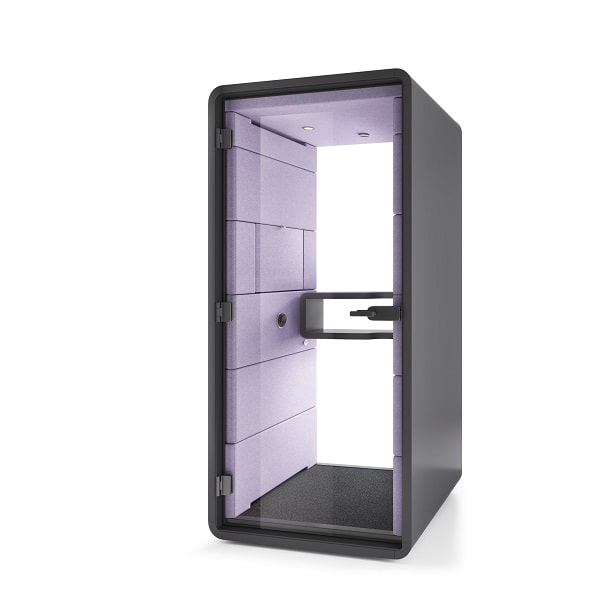
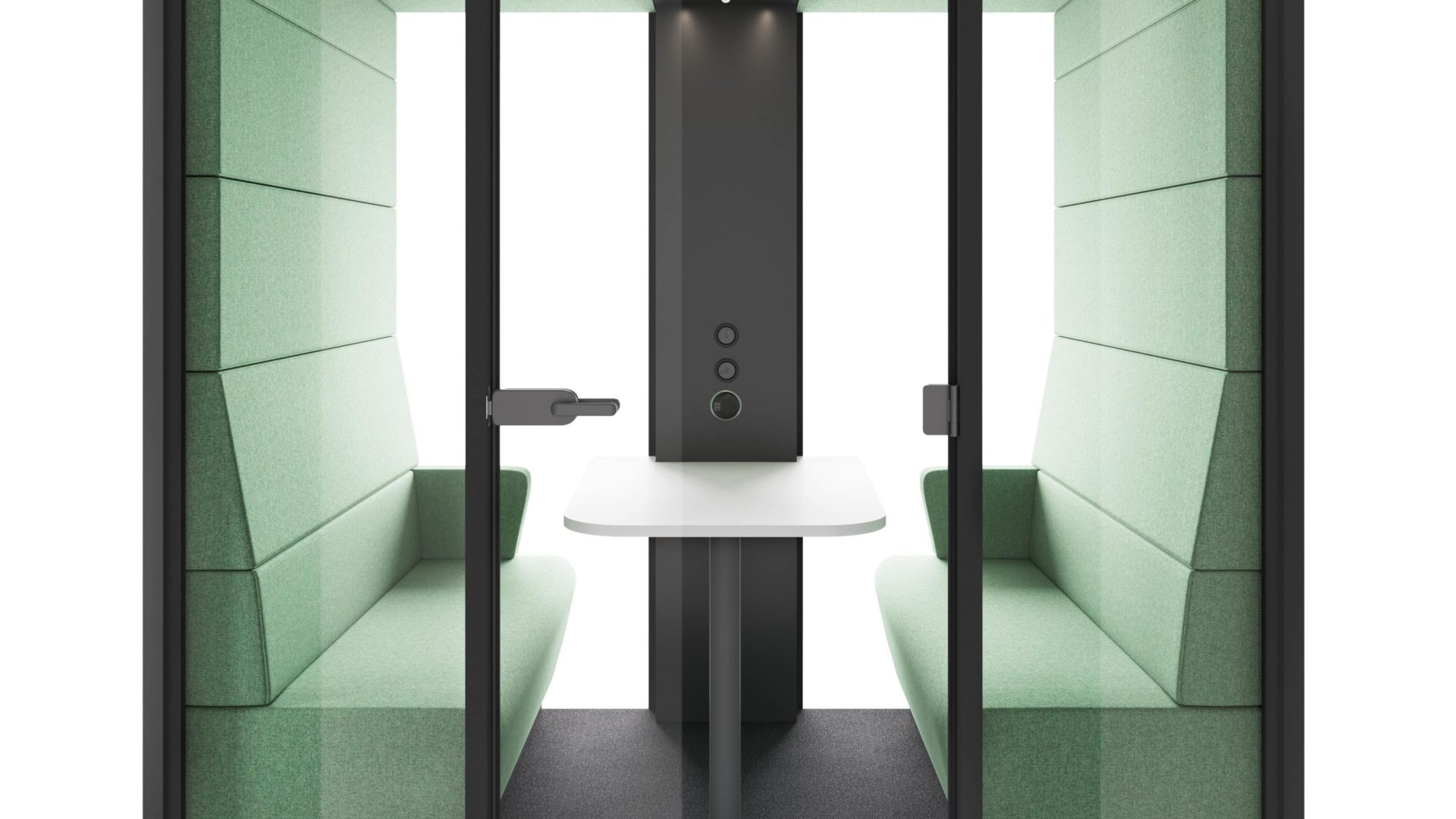

50% of employees are unhappy with the level of privacy they have at work.
This is troubling because 74% say they need access to private spaces in order to do their best work. Unsurprisingly, those with access to private workspaces like phone booths are more likely to report high levels of productivity, focus, and creativity.

Workplace noise – summary
While stress can boost productivity in the short term, it decreases it over the long haul. This is because chronic stress leads to fatigue and demotivation and impairs cognitive function, ultimately impeding one’s performance.
The pandemic significantly increased workplace stress; 61% of people felt burned out at work in 2020, up from 43% in just a year. By 2021, roughly 39% of employees were outright exhausted.
There’s a silver lining to the stress epidemic: office noise is a main contributor, and because it’s concrete and common, there are numerous inexpensive, straightforward remedies for immediate improvements.
Uncomplicated ways to control office noise include the addition of acoustic panels or wall-mounted baffles, the use of white noise machines or headphones, the installment of door sweeps, and rearrangement of the office layout.
Hushoffice pods are a strong solution to the office noise problem. They’re masterfully engineered to block out open floor noise for the user while containing noise made inside for peers on the floor. As a result, employees within enjoy a quieter private workspace while employees on the floor enjoy a quieter shared floor.
Office noise – frequently asked questions
How can office pods help reduce employee stress?
Acoustic office pods can help reduce stress because they are quiet and perfectly private environments. While the open office’s unpredictable stream of noise and happenings can be overwhelming, a pod’s predictably still atmosphere is restorative. At a time of sensory overload, low-stimuli spaces like these are invaluable in the workplace, as they give employees more command over their mental energy.
Why do office pods work?
Office pods are a solid solution because they give employees sound-insulated spaces to work, meet, and take calls, thereby greatly reducing background office noise, containing the top two sources of it in the workplace (conversations and phone calls).
How can I soundproof my office cheaply?
There are many inexpensive, unfussy ways to control office noise. Install door sweeps and acoustic panels or wall-mounted baffles. Use white noise machines, headphones, and desktop privacy screens. Rearrange the office layout with the help of sound-absorbing partitions like SONIQ. Use plants, carpets, curtains, and wall art to absorb sound, covering hard surfaces with acoustic materials. Encourage quiet behavior, designating certain hours of the day as “quiet hours” and certain spaces of the office as “quiet zones.” Hold meetings in sound-insulating spaces like hushMeet.
